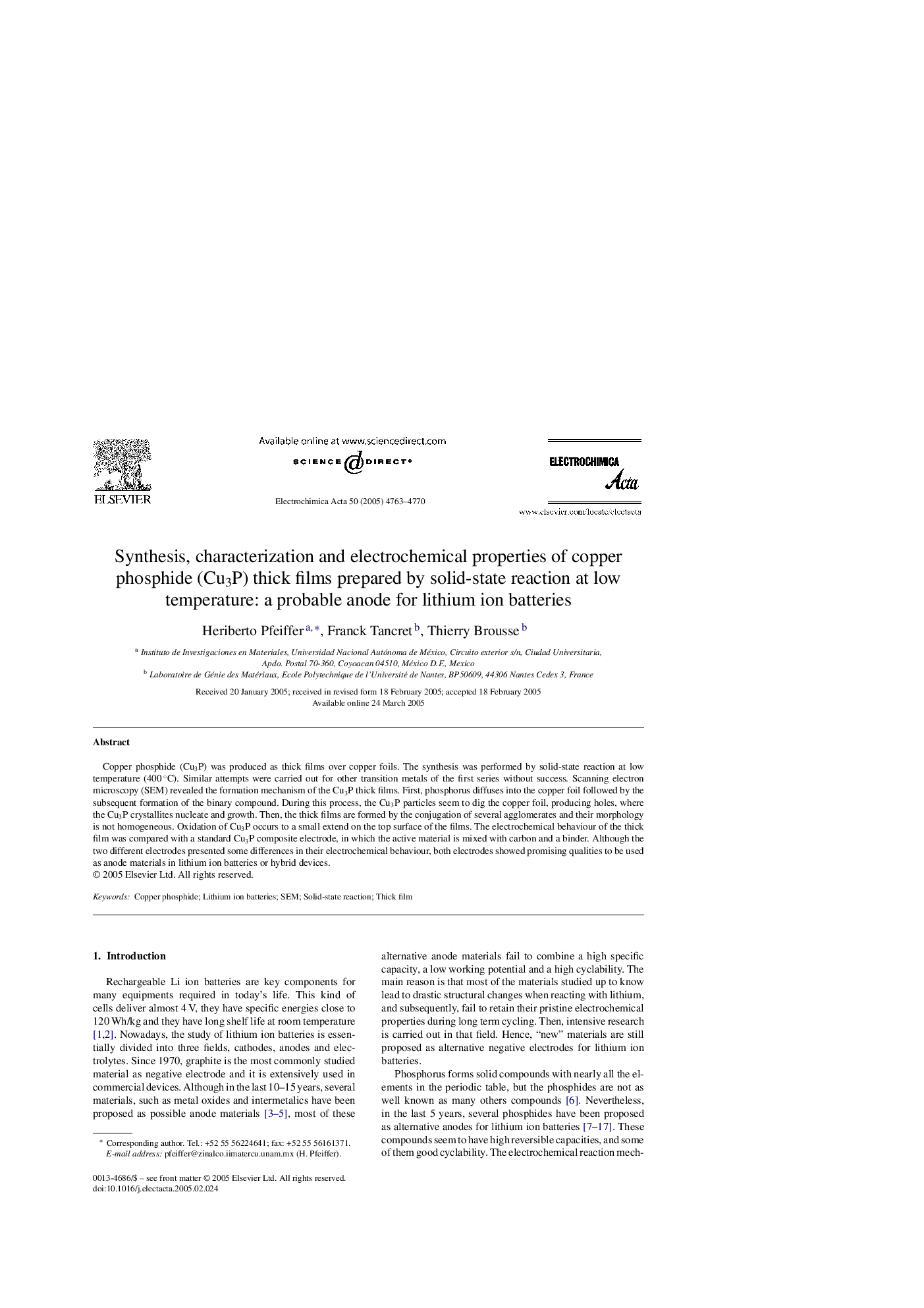| Article ID | Journal | Published Year | Pages | File Type |
|---|---|---|---|---|
| 196600 | Electrochimica Acta | 2005 | 8 Pages |
Copper phosphide (Cu3P) was produced as thick films over copper foils. The synthesis was performed by solid-state reaction at low temperature (400 °C). Similar attempts were carried out for other transition metals of the first series without success. Scanning electron microscopy (SEM) revealed the formation mechanism of the Cu3P thick films. First, phosphorus diffuses into the copper foil followed by the subsequent formation of the binary compound. During this process, the Cu3P particles seem to dig the copper foil, producing holes, where the Cu3P crystallites nucleate and growth. Then, the thick films are formed by the conjugation of several agglomerates and their morphology is not homogeneous. Oxidation of Cu3P occurs to a small extend on the top surface of the films. The electrochemical behaviour of the thick film was compared with a standard Cu3P composite electrode, in which the active material is mixed with carbon and a binder. Although the two different electrodes presented some differences in their electrochemical behaviour, both electrodes showed promising qualities to be used as anode materials in lithium ion batteries or hybrid devices.
